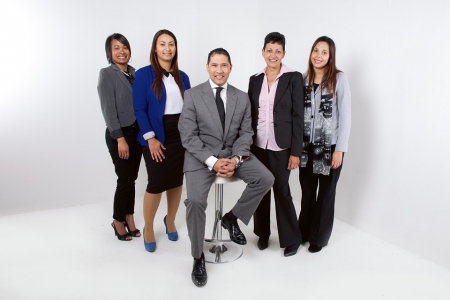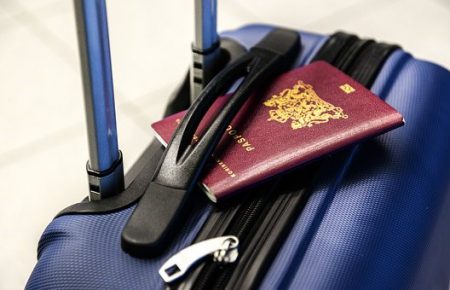Studying abroad in the United States is something that everyone will dream once. However, in the United States, tuition is on par with that of Japanese medical schools, and it is not easy to cover. For that reason, many people use exchange programs.
Here, I will mainly talk about the limitation of bytes for graduate students.
Exchange student VISA in USA

F1VISA
Students studying in the United States get an F1 visa. Regardless of whether you are studying abroad, studying abroad, or studying abroad, you will need an F1 visa to study in the United States. And this F1 visa has two restrictions.
If you want to work part-time with this F1 visa, you can only work 20 hours a week. International students who come to Japan are allowed to work 28 hours a week, so you can see that the time is shorter.
Also, when working part-time with an F1 visa, not everywhere is good. You can only work part-time on the school campus. For example, there are part-time jobs in various places, such as cafeterias, kitchens, libraries, and laboratories. Again, there are basically no restrictions on foreign students coming to Japan as long as they do work other than customs sales. When studying in the United States, regulations are stricter than in Japan.
Studying and working at the same time…
Earlier, I mentioned that American universities are expensive. It is not unusual to pay around 4 million yen a year. Therefore, if you are studying abroad, you may consider a part-time job as a supplement to your tuition and living expenses.
Many students work part-time to improve their language skills.
However, American universities are busy with lecture preparation and assignments, and few people work more than 20 hours. In Japan, there are quite a few students who skip classes for part-time jobs or focus on part-time jobs and circles, but in the United States it is easy to drop credits, so I skip part-time jobs and work part-time There is no sense of that.
Grad students may not have money!?

Grad students use scholarships
The university has undergraduate and graduate students. When undergraduates study abroad, they usually pay their own tuition or use exchange programs. On the other hand, graduate students have more options to study abroad with scholarships in various programs. For example, international exchange programs for American scholars and graduate students, researchers and professionals, and Fulbright are prime examples.
For example, Fulbright has different visa years depending on the country of origin. For example, Germany, a major country, can get a 4-year visa, while Belgium, a small country, can only get a 1-year visa. You can borrow a student loan while studying abroad with a four-year F1 visa, but not one year.
Many graduate students often go to universities abroad using such programs. In many cases, parents say, “Let’s manage the tuition at the graduate school yourself,” and it is not uncommon for scholarships to cover tuition and living expenses. Therefore, the part-time job that you can do in your F1 visa is very important.
PhD students tend to take time as much as they need
On the other hand, American graduate schools sometimes have a commitment to making good things for years.
For example, Japanese graduate schools have a master’s program (master’s program) of 2 years and a doctoral program (doctoral program) of 3 years, and once it was common to complete the doctoral program in as long a time as possible. . However, depending on the field, it is becoming more common in recent years to finish in as many as three years.
In the United States, on the other hand, there is a tendency to spend as much time as possible to make good things. In other words, many of the graduate students who have been using the above-mentioned programs have F1 visa coverage if they have not passed the scholarship due to the age of the program and the tuition cannot be covered by themselves. You have to work inside and pay your tuition.
University uses the opportunities for students to work as promotion

They tend to hire undergrads
I mentioned earlier that F1 visas only allow campus work. However, depending on the university, many jobs on campus are for undergraduate students. It is because those who are undergraduates will have less salary, and the university will have a PR effect by giving “undergraduates a chance to work part-time”.
As a result, international students at graduate schools who have not been able to obtain scholarships or borrow student loans will have a further reduction in income. For doctoral students, for example, if you can teach as a university lecturer, you will earn a little income, but if you work part-time in a laboratory or the like, even if you work full time, the hourly wage will be 10 dollars There is a reality that it does not make much income, such as less.
Can they finish their study if they had to work?
Furthermore, being able to work only 20 hours a week means that you can work only 4 hours a day on 5 days of the week. It doesn’t seem like a great deal of time to ask 4 hours, but it is a considerable burden for university students who have to do their own research and write a dissertation for 4 hours.
Also, it is really hard to pay tuition and living expenses at around $ 10 per hour and earn money until the research day to do research. Unless you have the support of your parents or lover, or your spouse for a student marriage, obtaining a degree at a graduate school in the United States is financially challenging.
Be realistic if you want to study in USA

When you hear about studying abroad, many people think of undergraduate exchange and language study abroad. Few people will ever think of earning tuition while living part-time with an F1 visa.
However, when studying abroad at graduate school, it is necessary to think so realistically. As I said, don’t worry too much if you get help from your parents, lover, or spouse. However, if you want to graduate from graduate school on your own or get a degree on your own, you need to take the F1 visa work restrictions seriously.










































